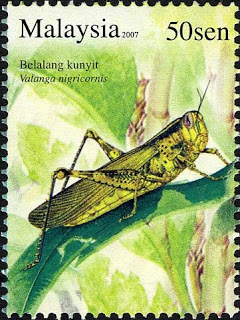The current terrestrial risk assessment of insecticides regarding nontarget arthropods considers exclusively beneficial organisms, whereas herbivorous insects, such as grasshoppers, are ignored. However, grasshoppers living in field margins or meadows adjacent to crops may potentially be exposed to insecticides due to contact with or ingestion of contaminated food. Therefore, the present study assessed effects of five active ingredients of insecticides (dimethoate, pirimicarb, imidacloprid, lambda-cyhalothrin, and
deltamethrin) on the survival of Chorthippus sp. grasshopper nymphs by considering two routes of exposure (contact and oral). The experiments were accompanied by monitoring field margins that neighbored cereals, vineyards, and orchards. Grasslands were used as reference sites. The laboratory toxicity tests revealed a sensitivity of grasshoppers with regard to the insecticides tested in the present study similar to that of the standard test species used in arthropod risk assessments. In the field monitoring program, increasing grasshopper densities were detected with increasing field margin width next to cereals and vineyards, but densities remained low over the whole range of field margins from 0.5 to 20m next to orchards. Grasshopper densities equivalent to those of grassland sites were only observed in field margins exceeding 9m in width, except for field margins next to orchards. These results may indicate that current insecticide risk assessments are insufficiently protective for grasshoppers in field margins.
Source:
REBECCA BUNDSCHUH et al. (2012) Environmental Toxicology and Chemistry, Vol. 31, No. 8, pp. 1874–1879 (attached)

- Login om te reageren
